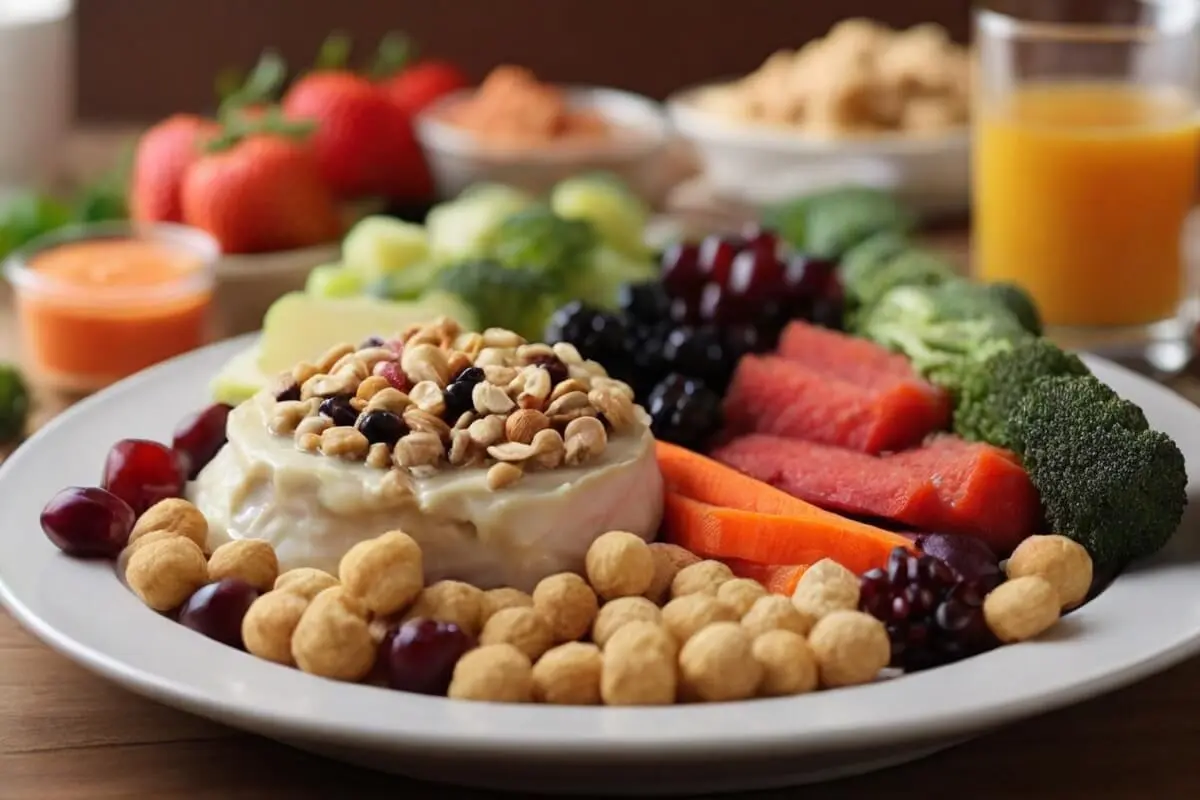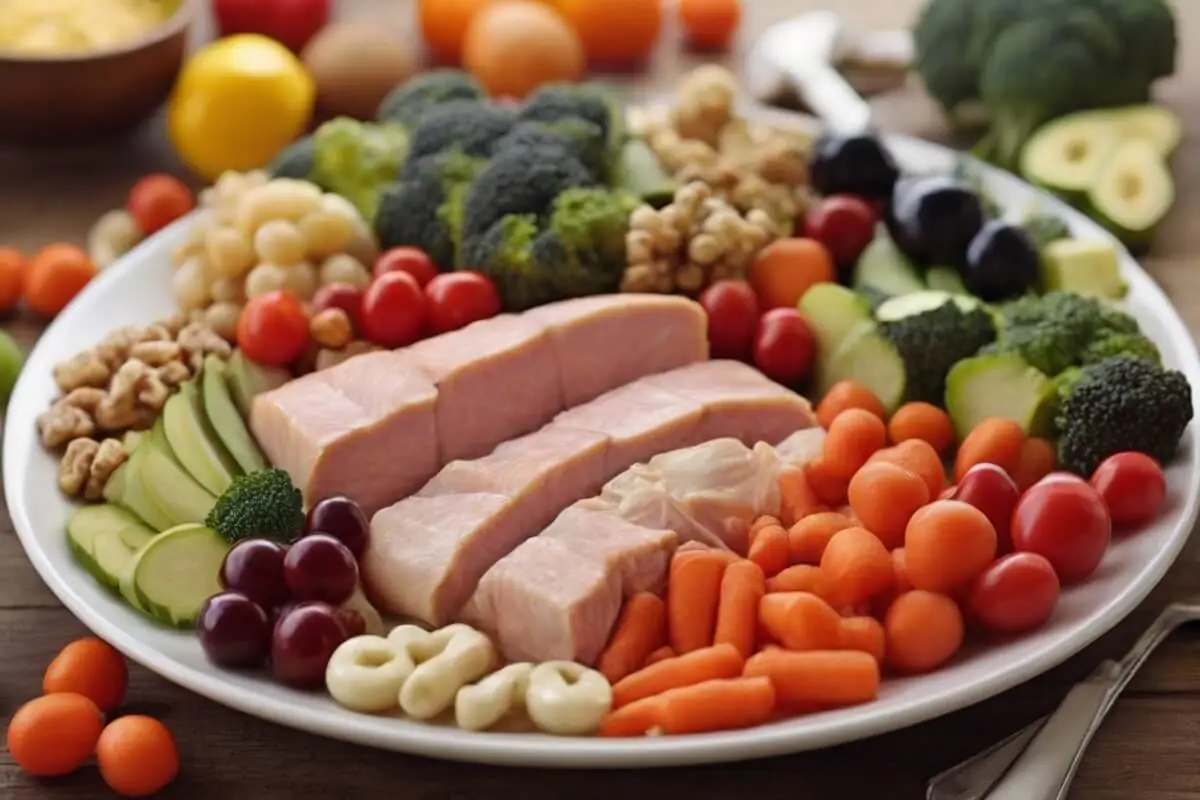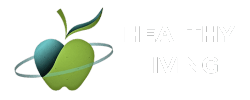Diverticulitis is a condition that affects the digestive system, especially the large intestine. It occurs when small pouches called diverticula, which are normally harmless, become inflamed or infected. This can cause symptoms such as abdominal pain, fever, nausea, vomiting, and changes in bowel habits.
Diverticulitis can be treated with antibiotics, pain relievers, and sometimes surgery. However, one of the most important aspects of managing diverticulitis is following a proper diet. A diet for diverticulitis can help reduce inflammation, prevent complications, and promote healing. In this article, we will explain what a diet for diverticulitis is, why it is important, and how to follow it step by step.
How I Discovered the Benefits of a Diet for Diverticulitis

I have been suffering from diverticulitis for several years. It started with occasional episodes of mild discomfort in my lower left abdomen, which I ignored for a long time. I thought it was just gas or indigestion, and I did not pay much attention to what I ate or drank.
However, things got worse over time. I started to experience more frequent and severe attacks of pain, accompanied by fever, chills, and diarrhea. I had to miss work, cancel plans, and spend days in bed. I felt miserable and scared.
I finally decided to see a doctor, who diagnosed me with diverticulitis after performing some tests. He prescribed me some antibiotics and painkillers, and advised me to follow a diet for diverticulitis. He explained that this diet would help me avoid foods that could irritate or damage my colon, and instead focus on foods that would soothe and heal it.
I was skeptical at first. I did not think that changing my diet would make much of a difference. I was used to eating whatever I wanted, whenever I wanted. I loved spicy, greasy, and processed foods. I hated fruits, vegetables, and whole grains. I did not see how I could give up my favorite foods and enjoy eating bland and boring foods.
However, I decided to give it a try. I followed the doctor’s instructions and started to follow a diet for diverticulitis. To my surprise, I noticed a significant improvement in my condition. I had fewer and less intense episodes of pain. I felt more energetic and less depressed. I even lost some weight and improved my blood pressure and cholesterol levels.
I realized that following a diet for diverticulitis was not only good for my colon, but also for my overall health and well-being. I learned to appreciate and enjoy foods that were good for me, and to avoid or limit foods that were bad for me. I discovered new recipes and flavors that I never tried before. I found out that eating healthy did not have to be boring or difficult.
I am not saying that following a diet for diverticulitis cured me completely. I still have to take medications and see my doctor regularly. I still have to be careful and monitor my symptoms. I still have to deal with some challenges and setbacks. But I can say that following a diet for diverticulitis changed my life for the better. It helped me manage my condition, prevent complications, and improve my quality of life.
What is a Diet for Diverticulitis and Why is it Important?

A diet for diverticulitis is a way of eating that aims to reduce inflammation, prevent infection, and promote healing in the colon. It is based on two main principles: avoiding foods that could irritate or damage the diverticula, and increasing foods that could soothe or protect the colon.
The foods that could irritate or damage the diverticula are mainly those that are high in fiber, seeds, nuts, or skins. These foods could get trapped in the pouches and cause inflammation or infection. Some examples of these foods are:
- Whole grains, such as wheat, oats, barley, rye, and quinoa
- Fruits, such as apples, pears, berries, grapes, and citrus fruits
- Vegetables, such as broccoli, cauliflower, cabbage, corn, and peas
- Beans, lentils, and soy products
- Nuts, seeds, and popcorn
- Dried fruits, such as raisins, prunes, and apricots
The foods that could soothe or protect the colon are mainly those that are low in fiber, easy to digest, and anti-inflammatory. These foods could help reduce pain, swelling, and infection in the colon. Some examples of these foods are:
- Refined grains, such as white bread, white rice, and pasta
- Cooked or canned fruits, such as applesauce, bananas, and peaches
- Cooked or canned vegetables, such as carrots, potatoes, and green beans
- Lean meats, such as chicken, turkey, and fish
- Eggs and dairy products, such as yogurt, cheese, and milk
- Soups, broths, and juices
Following a diet for diverticulitis is important because it can help prevent or treat diverticulitis attacks. A diverticulitis attack is a sudden and severe flare-up of symptoms, such as abdominal pain, fever, nausea, vomiting, and diarrhea. A diverticulitis attack can be triggered by eating foods that irritate or damage the diverticula, or by other factors, such as stress, infection, or medication.
A diet for diverticulitis can help prevent diverticulitis attacks by avoiding foods that could cause them, and by increasing foods that could prevent them. A diet for diverticulitis can also help treat diverticulitis attacks by reducing inflammation, infection, and pain in the colon, and by allowing the colon to rest and heal.
How to Follow a Diet for Diverticulitis: A Step by Step Guide

Following a diet for diverticulitis is not a one-size-fits-all approach. It may vary depending on the severity and frequency of your symptoms, your personal preferences, and your doctor’s recommendations. However, here is a general step by step guide that you can follow to start following a diet for diverticulitis:
Step 1: Identify Your Triggers
The first step to follow a diet for diverticulitis is to identify the foods that trigger or worsen your symptoms. These foods may be different for each person, and may depend on factors such as the size, location, and number of diverticula, the degree of inflammation or infection, and the individual sensitivity or tolerance.
To identify your triggers, you can keep a food diary, where you record what you eat and drink, when you eat and drink, and how you feel after eating and drinking. You can also use a symptom tracker, where you rate your symptoms, such as pain, fever, nausea, vomiting, and diarrhea, on a scale from 0 to 10. You can then look for patterns and correlations between your food intake and your symptom severity.
You can also try an elimination diet, where you eliminate the foods that are most likely to cause problems, such as those high in fiber, seeds, nuts, or skins, for a period of time, such as two to four weeks. You can then reintroduce them one by one, and monitor your reactions. You can then avoid or limit the foods that cause negative reactions, and include or increase the foods that cause positive or neutral reactions.
Step 2: Follow a Clear Liquid Diet During an Attack
The second step to follow a diet for diverticulitis is to follow a clear liquid diet during a diverticulitis attack. A clear liquid diet is a type of diet that consists of fluids that are transparent or translucent, and that do not contain any solid particles, pulp, or residue. A clear liquid diet can help ease the symptoms of a diverticulitis attack, such as pain, fever, nausea, vomiting, and diarrhea, by:
- Reducing the pressure and irritation on the colon
- Preventing the accumulation of food or bacteria in the diverticula
- Hydrating and replenishing the body
- Providing some calories and nutrients
Some examples of clear liquids that you can consume during a diverticulitis attack are:
- Water
- Ice chips
- Clear broth or bouillon
- Clear fruit juices, such as apple, cranberry, or grape
- Clear sodas, such as ginger ale or lemon-lime
- Herbal teas, such as chamomile or peppermint
- Gelatin, such as Jell-O
- Popsicles
You should avoid clear liquids that contain caffeine, alcohol, or sugar, as these can worsen your symptoms or dehydrate you. You should also avoid clear liquids that contain red or purple dye, as these can interfere with some tests or procedures.
You should follow a clear liquid diet for as long as your doctor advises you, or until your symptoms improve. This may range from a few hours to a few days, depending on the severity of your condition. You should not follow a clear liquid diet for longer than necessary, as this can lead to malnutrition, dehydration, or electrolyte imbalance.
Step 3: Transition to a Low-Fiber Diet After an Attack
The third step to follow a diet for diverticulitis is to transition to a low-fiber diet after a diverticulitis attack. A low-fiber diet is a type of diet that limits the intake of dietary fiber.
A low-fiber diet is a type of diet that limits the intake of dietary fiber, which is the indigestible part of plant foods. Dietary fiber can be classified into two types: soluble and insoluble. Soluble fiber dissolves in water and forms a gel-like substance that can lower cholesterol and blood sugar levels. Insoluble fiber does not dissolve in water and adds bulk to the stool, which can help prevent constipation and regulate bowel movements.
A low-fiber diet can help ease the symptoms of diverticulitis, such as pain, fever, nausea, vomiting, and diarrhea, by:
- Reducing the amount and frequency of stool
- Decreasing the pressure and strain on the colon
- Allowing the colon to rest and heal
- Preventing the formation of new diverticula or the worsening of existing ones
A low-fiber diet typically consists of less than 15 grams of fiber per day. Some examples of low-fiber foods that you can consume after a diverticulitis attack are:
- Refined grains, such as white bread, white rice, and pasta
- Cooked or canned fruits, such as applesauce, bananas, and peaches
- Cooked or canned vegetables, such as carrots, potatoes, and green beans
- Lean meats, such as chicken, turkey, and fish
- Eggs and dairy products, such as yogurt, cheese, and milk
- Soups, broths, and juices
You should avoid high-fiber foods that could irritate or damage the diverticula, such as those mentioned in step 1. You should also avoid foods that are spicy, greasy, or fried, as these can worsen your symptoms or cause indigestion. You should also limit foods that are gas-producing, such as beans, cabbage, and onions, as these can cause bloating or cramping.
You should follow a low-fiber diet for as long as your doctor advises you, or until your symptoms resolve. This may range from a few days to a few weeks, depending on the severity of your condition. You should not follow a low-fiber diet for longer than necessary, as this can lead to nutritional deficiencies, weight loss, or constipation.
Step 4: Gradually Increase Your Fiber Intake After Recovery
The fourth step to follow a diet for diverticulitis is to gradually increase your fiber intake after recovery. A high-fiber diet is a type of diet that includes plenty of dietary fiber, which is the indigestible part of plant foods. Dietary fiber can be classified into two types: soluble and insoluble. Soluble fiber dissolves in water and forms a gel-like substance that can lower cholesterol and blood sugar levels. Insoluble fiber does not dissolve in water and adds bulk to the stool, which can help prevent constipation and regulate bowel movements.
A high-fiber diet can help prevent or reduce the recurrence of diverticulitis, by:
- Increasing the volume and softness of stool
- Decreasing the pressure and strain on the colon
- Promoting the growth of beneficial bacteria in the colon
- Reducing the risk of inflammation or infection in the diverticula
A high-fiber diet typically consists of at least 25 to 30 grams of fiber per day. Some examples of high-fiber foods that you can consume after recovery are:
- Whole grains, such as wheat, oats, barley, rye, and quinoa
- Fruits, such as apples, pears, berries, grapes, and citrus fruits
- Vegetables, such as broccoli, cauliflower, cabbage, corn, and peas
- Beans, lentils, and soy products
- Nuts, seeds, and popcorn
- Dried fruits, such as raisins, prunes, and apricots
You should increase your fiber intake gradually, by adding one or two servings of high-fiber foods per day, until you reach your recommended daily amount. You should also drink plenty of water, at least eight glasses per day, to help the fiber move through your digestive system and prevent dehydration. You should also chew your food well, to help break down the fiber and ease digestion.
You should monitor your symptoms and reactions as you increase your fiber intake. If you experience any discomfort, such as bloating, gas, or cramping, you may need to slow down or reduce your fiber intake temporarily, until your body adjusts. You may also need to avoid or limit some high-fiber foods that are more likely to cause problems, such as those with seeds, nuts, or skins.
You should follow a high-fiber diet for the rest of your life, or as long as your doctor advises you, to prevent or reduce the recurrence of diverticulitis. You should also maintain a healthy weight, exercise regularly, and avoid smoking, as these can also lower your risk of diverticulitis.
Step 5: Supplement Your Diet with Probiotics and Prebiotics
The fifth step to follow a diet for diverticulitis is to supplement your diet with probiotics and prebiotics. Probiotics are live microorganisms, such as bacteria or yeast, that can benefit your health by improving your gut flora, which is the collection of microorganisms that live in your digestive tract. Prebiotics are substances, such as fiber or starch, that can feed and stimulate the growth of probiotics.
Supplementing your diet with probiotics and prebiotics can help prevent or treat diverticulitis, by:
- Enhancing your immune system and fighting off harmful bacteria
- Reducing inflammation and infection in the colon
- Improving your digestion and absorption of nutrients
- Regulating your bowel movements and preventing constipation or diarrhea
Some examples of probiotic foods that you can consume are:
- Yogurt, kefir, and other fermented dairy products
- Sauerkraut, kimchi, and other fermented vegetables
- Miso, tempeh, and other fermented soy products
- Kombucha, kvass, and other fermented drinks
Some examples of prebiotic foods that you can consume are:
- Whole grains, such as wheat, oats, barley, rye, and quinoa
- Fruits, such as apples, pears, bananas, and berries
- Vegetables, such as garlic, onion, leek, asparagus, and artichoke
- Beans, lentils, and soy products
You can also take probiotic and prebiotic supplements, such as capsules, tablets, or powders, that contain specific strains and doses of microorganisms and substances that are beneficial for your gut health. You should consult your doctor before taking any supplements, as they may interact with your medications or cause side effects.
You should supplement your diet with probiotics and prebiotics daily, or as often as your doctor advises you, to prevent or treat diverticulitis. You should also store your probiotic and prebiotic foods and supplements properly, as they may lose their potency or quality if exposed to heat, light, or moisture.
Step 6: Modify Your Diet According to Your Symptoms and Tolerance
The sixth step to follow a diet for diverticulitis is to modify your diet according to your symptoms and tolerance. Your symptoms and tolerance may vary depending on the stage and severity of your condition, your personal preferences, and your doctor’s recommendations. You may need to adjust your diet accordingly, to suit your needs and goals.
For example, if you have mild or no symptoms, and you have a high tolerance for fiber, you may be able to follow a high-fiber diet most of the time, and include a variety of foods that are good for your colon health. However, if you have moderate or severe symptoms, and you have a low tolerance for fiber, you may need to follow a low-fiber diet most of the time, and avoid or limit foods that could irritate or damage your colon.
You may also need to modify your diet according to other factors, such as your age, weight, activity level, medical history, and medications. You may need to increase or decrease your calorie, protein, fat, carbohydrate, vitamin, mineral, or fluid intake, depending on your nutritional needs and goals. You may also need to avoid or limit foods that could interfere with your medications or cause adverse reactions, such as grapefruit, alcohol, or caffeine.
You should modify your diet according to your symptoms and tolerance, as often as necessary, to prevent or treat diverticulitis. You should also monitor your symptoms and reactions, and report any changes or concerns to your doctor. You should also seek medical attention immediately if you experience any signs of complications, such as severe pain, bleeding, fever, or dehydration.
Step 7: Seek Professional Guidance and Support
The seventh and final step to follow a diet for diverticulitis is to seek professional guidance and support. Following a diet for diverticulitis can be challenging and confusing, especially if you have to make significant changes to your eating habits and lifestyle. You may need some help and advice from experts and peers, who can provide you with information, resources, tips, and encouragement.
Some examples of professionals that you can seek guidance and support from are:
- Your doctor, who can diagnose your condition, prescribe your medications, monitor your progress, and refer you to other specialists
- Your dietitian, who can assess your nutritional status, design your meal plan, educate you about food choices, and follow up with you regularly
- Your nurse, who can administer your treatments, check your vital signs, manage your pain, and teach you self-care skills
- Your therapist, who can help you cope with your emotions, stress, and mental health issues, and offer you counseling, therapy, or medication
- Your pharmacist, who can dispense your medications, explain their effects and side effects, and answer your questions
- Your surgeon, who can perform your surgery, if needed, and explain the risks and benefits of the procedure
- Your physical therapist, who can help you recover your strength, mobility, and function after surgery or a prolonged bed rest
- Your social worker, who can help you access financial, legal, or community resources, and assist you with your discharge planning and follow-up care
Some examples of peers that you can seek guidance and support from are:
- Your family and friends, who can provide you with emotional, practical, and financial support, and accompany you to your appointments and treatments
- Your support group, who can share their experiences, insights, and advice with you, and offer you a safe and confidential space to express your feelings and concerns
- Your online community, who can connect you with other people who have diverticulitis, and provide you with information, resources, tips, and encouragement
You should seek professional guidance and support as often as you need, to follow a diet for diverticulitis. You should also seek peer guidance and support as often as you want, to cope with diverticulitis. You should not hesitate to ask for help or advice, as this can make a big difference in your recovery and well-being.
Conclusion
Following a diet for diverticulitis is one of the most important aspects of managing diverticulitis. A diet for diverticulitis can help prevent or treat diverticulitis attacks, reduce inflammation and infection in the colon, and promote healing and recovery. A diet for diverticulitis can also improve your overall health and quality of life, by lowering your risk of complications, such as bleeding, perforation, abscess, fistula, or bowel obstruction.
To follow a diet for diverticulitis, you need to follow seven steps:
- Identify your triggers
- Follow a clear liquid diet during an attack
- Transition to a low-fiber diet after an attack
- Gradually increase your fiber intake after recovery
- Supplement your diet with probiotics and prebiotics
- Modify your diet according to your symptoms and tolerance
- Seek professional guidance and support
Following a diet for diverticulitis can be challenging and confusing, especially if you have to make significant changes to your eating habits and lifestyle. However, you can do it with some help and advice from experts and peers, who can provide you with information, resources, tips, and encouragement. You can also do it with some motivation and determination, by focusing on your goals and benefits, and by celebrating your achievements and progress.
We hope that this article has helped you understand what a diet for diverticulitis is, why it is important, and how to follow it step by step. We also hope that this article has inspired you to follow a diet for diverticulitis, and to take charge of your health and well-being.
If you have any questions, comments, or suggestions about this article, please leave them below. We would love to hear from you and learn from you. Thank you for reading and happy eating.
Follow our social networks facebook, pinterest and see more tips
